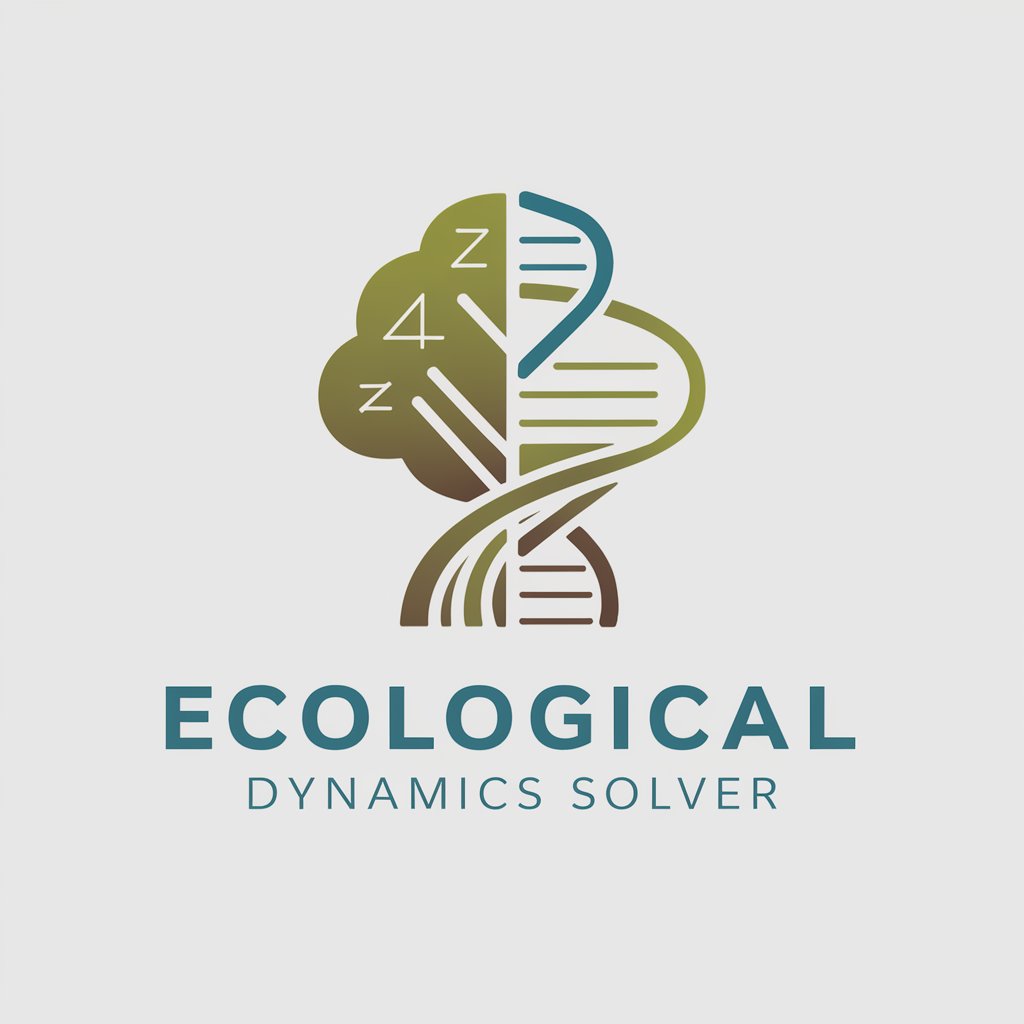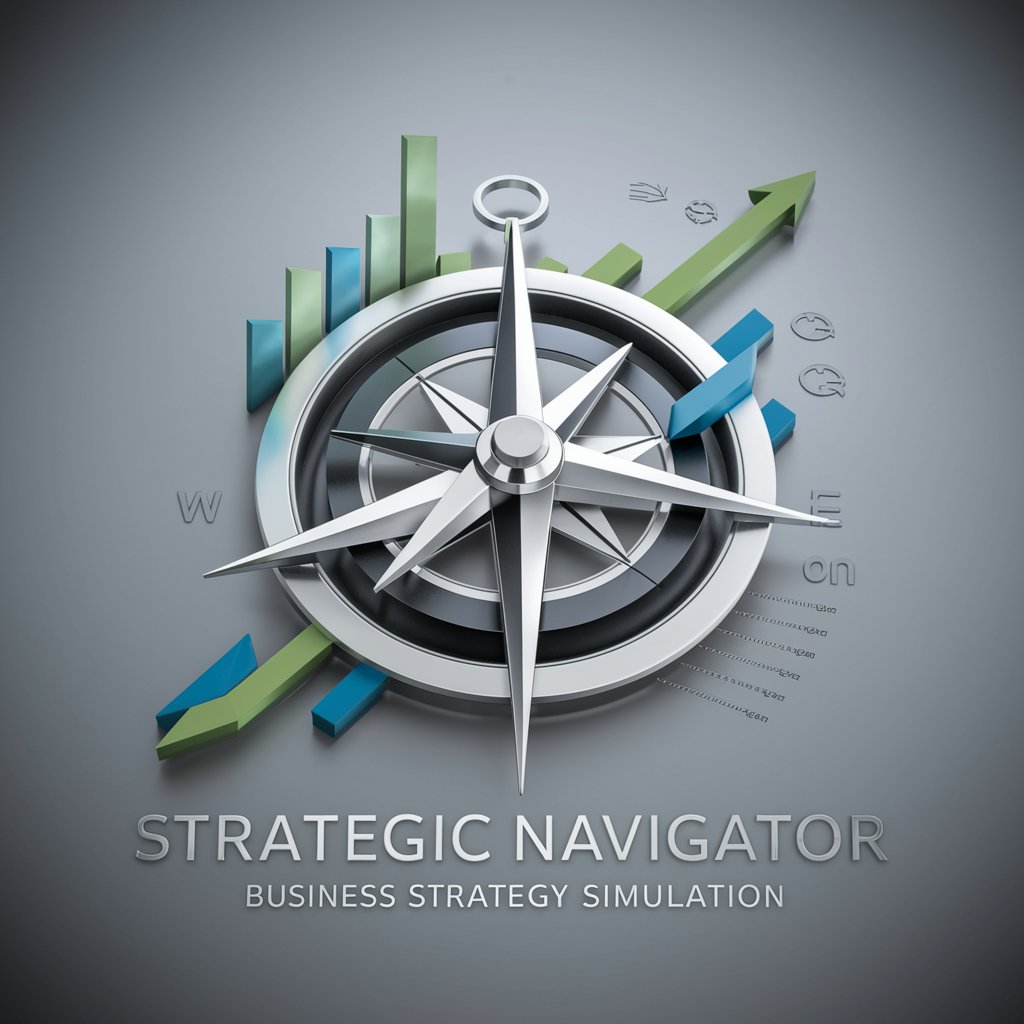Ecological Dynamics Solver - Evolutionary Biology Insights

Hello! Ready to dive into some evolutionary biology calculations?
Unravel Evolution with AI Power
Explain the process of calculating the intrinsic rate of increase (r) for a population.
Describe the steps to analyze population growth using a Leslie matrix.
How can altering the fecundity and survival rates impact population dynamics?
Discuss the limitations of using population pyramids for predicting future growth.
Get Embed Code
Overview of Ecological Dynamics Solver
Ecological Dynamics Solver is a specialized computational tool designed to address complex problems within the field of ecological dynamics and evolutionary biology. It leverages advanced algorithms and data analysis techniques to provide insightful solutions, supporting research and decision-making in ecology, conservation biology, and related fields. This tool is particularly adept at analyzing population dynamics, genetic variations, and environmental interactions, making it invaluable for forecasting ecological trends, assessing species' survival strategies, and planning conservation efforts. For example, it can simulate the impact of climate change on habitat suitability for different species, or evaluate the genetic diversity within a population under various evolutionary pressures. Powered by ChatGPT-4o。

Core Functions and Applications
Population Dynamics Analysis
Example
Predicting the impact of hunting on a specific animal population.
Scenario
Researchers can use the tool to model the population dynamics of the Îles de la Madeleine cottontail rabbits, taking into account factors like birth rates, death rates, and the impact of hunting. This helps in understanding how these activities affect population size and structure over time, guiding conservation strategies.
Genetic Diversity Assessment
Example
Assessing the genetic health of a population.
Scenario
Conservation geneticists might apply this function to evaluate the genetic diversity of an endangered species, identifying potential risks for inbreeding depression and guiding genetic management practices to ensure long-term viability.
Ecosystem Simulation
Example
Exploring the effects of environmental changes on ecosystems.
Scenario
This feature allows users to simulate various scenarios, such as deforestation or climate change, to predict their impacts on ecosystem structure and function. It's particularly useful for environmental planners and ecologists in developing management and mitigation strategies.
Conservation Planning Support
Example
Designing protected areas to maximize biodiversity conservation.
Scenario
By integrating data on species distributions, habitat requirements, and human impacts, the tool can help conservationists optimize the placement and management of protected areas, ensuring the protection of key biodiversity areas.
Target User Groups
Academic Researchers
Scientists and scholars in fields like ecology, evolutionary biology, and environmental science, who require detailed analysis and modeling capabilities to support their research on biodiversity, population genetics, and species interactions.
Conservation Practitioners
Conservationists, wildlife managers, and environmental NGOs looking for data-driven tools to aid in the planning and implementation of conservation projects, habitat restoration efforts, and biodiversity assessments.
Environmental Policy Makers
Government agencies and policy advisors can utilize the tool to inform policy decisions related to wildlife management, land use planning, and environmental protection by understanding the ecological implications of various actions.
Educators and Students
Teachers and students in environmental and biological sciences can benefit from interactive simulations and analyses to enhance learning and provide practical insights into ecological and evolutionary concepts.

How to Use Ecological Dynamics Solver
Step 1
Begin by accessing a free trial at yeschat.ai, where no login or ChatGPT Plus subscription is required.
Step 2
Choose 'Ecological Dynamics Solver' from the list of available tools to start solving problems related to evolutionary biology.
Step 3
Enter your question or problem in the provided text box. Ensure it is related to ecological dynamics or evolutionary biology for the best results.
Step 4
Review the guidelines and examples provided on the tool's page to understand the format and type of questions that can be effectively addressed.
Step 5
Submit your query and wait for the AI to analyze and provide a detailed, step-by-step solution or answer to your problem.
Try other advanced and practical GPTs
Wise Scientist
Empowering insights into neuroscience with AI

EvolveGPT
Empowering Evolutionary Discovery with AI

Weird Biology
Visualizing the unseen biology.

Study Buddy
Empowering Learning with AI

ScriptureSeeker
Insightful exploration of religious texts

Food Cost Oracle
Optimize costs with AI insights

CryptoGPT
Unlocking Secrets with AI

Romance Books
Unveil the heart of romance literature with AI

Personal Branding Content Generator
Elevate Your Brand with AI

Strategic Navigator
Strategize, Simulate, Succeed with AI

CREAM
Empowering Athletes with AI-Driven Insights

Business Plan GPT
AI-Powered Business Planning Simplified

Frequently Asked Questions about Ecological Dynamics Solver
What types of problems can Ecological Dynamics Solver address?
It specializes in solving complex problems in evolutionary biology, including calculations involving population dynamics, genetic variations, species interactions, and environmental impacts on species evolution.
How accurate are the solutions provided by Ecological Dynamics Solver?
Solutions are based on scientific methods and models relevant to evolutionary biology, ensuring high accuracy. However, the preciseness can depend on the clarity and specificity of the input provided by the user.
Can I use Ecological Dynamics Solver for my academic research?
Absolutely, it's designed to support academic research by providing detailed solutions and explanations for complex ecological and evolutionary biology problems.
Is there a limit to the number of queries I can submit?
While the free trial offers generous access, continuous or advanced usage may require a subscription. Check the website for current usage policies and subscription options.
Can Ecological Dynamics Solver help with model simulation?
Yes, it can assist in understanding and setting up simulations for ecological and evolutionary dynamics, though actual simulation runs might require specific software or platforms.
